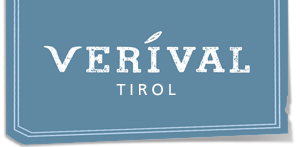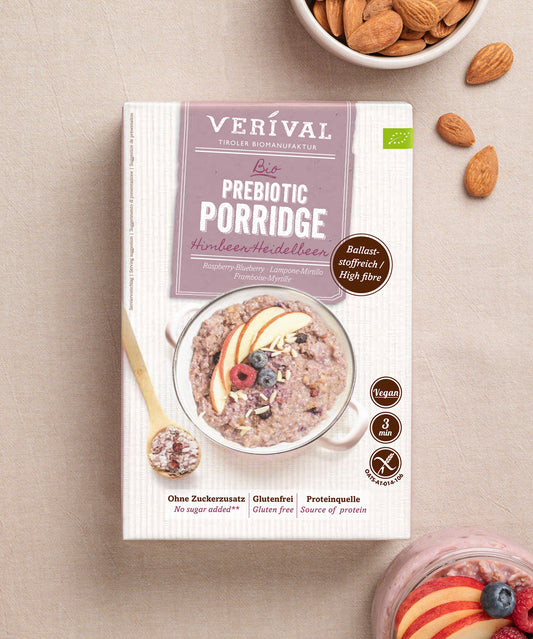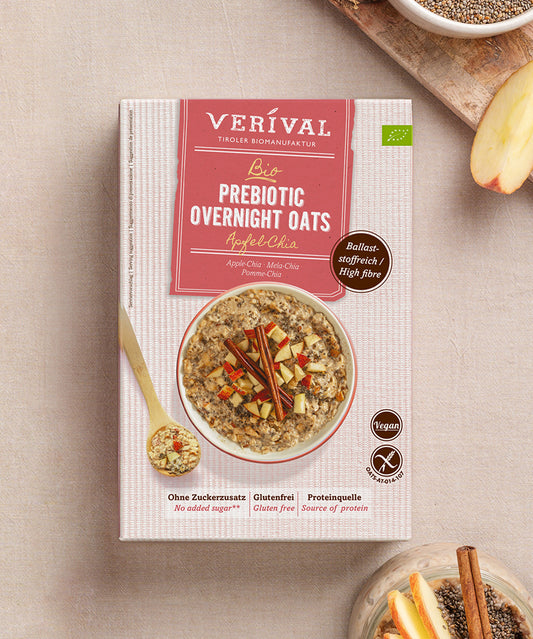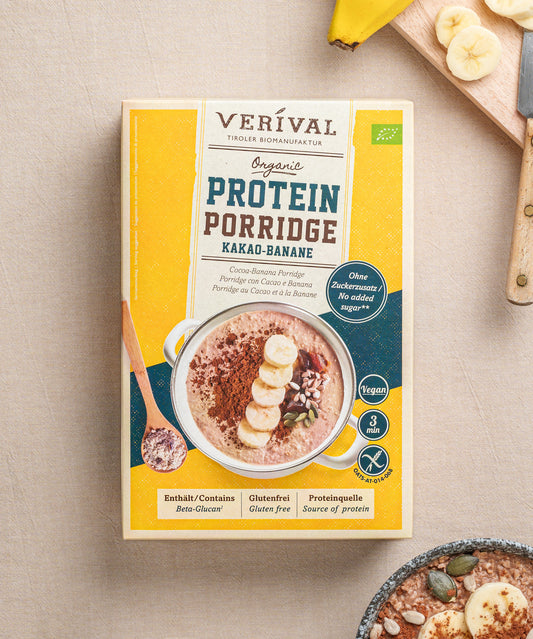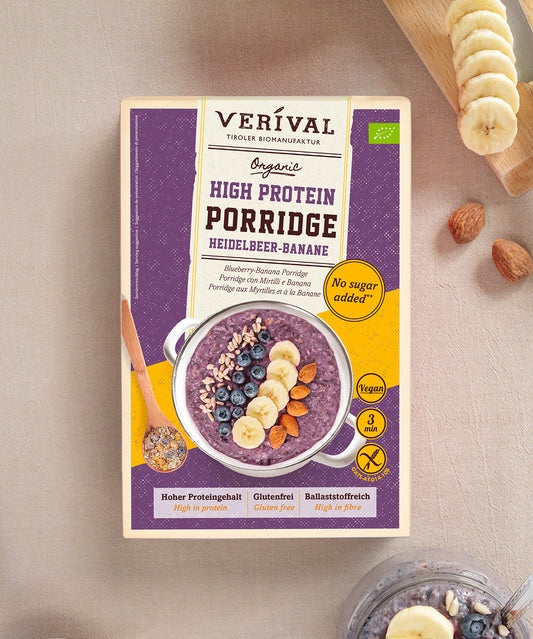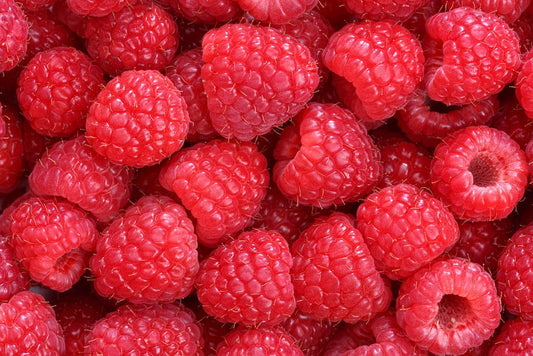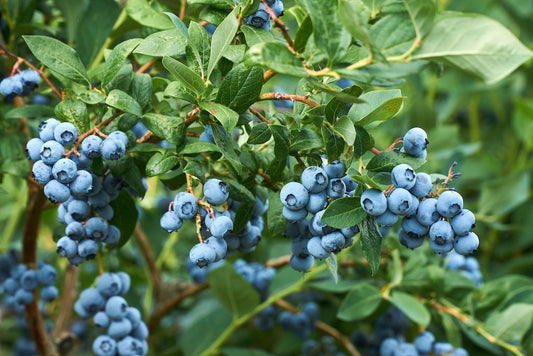Cereals are the most important staple food for humans and an essential part of a healthy diet. They are widespread all over the world and, depending on the type of cereal, provide us with the most important nutrients. All cereals, from wheat and rye to oats and rice, contain carbohydrates, provide healthy plant protein and numerous vitamins and nutrients.
In our article, you will learn everything you need to know about this versatile food.
Carbohydrates – Everything you need to know about these energy suppliers
The history of cereals
The cultivation of cereals goes back several thousand years before the birth of Christ. It began in the Middle East and only later did cereal cultivation come to Europe. The fact that humans became sedentary and no longer roamed around as hunters and gatherers is strongly associated with the domestication of cereals.
Cereal breeding – cultivated cereals instead of natural cereals
The cereals we know today have little in common with the sweet grasses that were originally cultivated. Cereal breeding began with the ancestors of wheat: emmer and einkorn. With each harvest, the particularly high-yielding plants were sorted out, so that eventually only the best grains were cultivated.
The objectives behind breeding changed over the years. While the initial focus was on good harvestability,
later efforts concentrated on improving resilience or modifying grinding and baking properties.
Today, grain in its various forms is widespread around the globe and is one of the most important foodstuffs in the world. However, it can no longer be considered a natural grain, having been manipulated by human hands over thousands of years.
Grain cultivation today
In 2019, 605 different types of grain were marketed in Germany. The most important types are wheat, barley, rye, triticale and oats. The yields of today's grain varieties are much higher than those of ancient grains. Genetic engineering is often used to increase yields even further.
Which countries lead in grain production?
The two most important countries for grain cultivation are China and the USA. These two countries are responsible for half of the world's grain production. India comes in third. In Europe, Ukraine, France and Germany lead the way in grain production.
What types of grain are there?
There are many types of grain, which have different levels of importance in different parts of the world.
Wheat
Wheat is one of the most important cereals, with millions of tonnes being processed every year. It has been cultivated and used for thousands of years. In Germany, winter wheat is mainly grown, with sowing taking place in autumn. The following types of wheat exist:
- Kamut (a type of wheat that originated in ancient Egypt )
- Durum wheat (used to make pasta)
- Emmer (ancient grain; healthiest and oldest representative of wheat)
- Einkorn (originally from Asia Minor; our ancestors later also cultivated it in Europe)
- Spelt Wheat (most important type of grain; known to almost all Central Europeans)
Wheat is the most important grain for German baked goods, because the flour is used, for example, for rolls, cakes, biscuits or white bread. Today, wheat is extremely cultivated and has little in common with the original grain. Some people react to the constant changes and further development of the grain with intolerances.
Rye
Alongside wheat, rye was the second most important grain in the Middle Ages. Like wheat, it was cultivated for use in baking bread, for example. These types of rye are available:
- Spring rye (perfect for organic farming)
- Winter rye (hardiest type of grain; in Central Europe, winter rye is almost exclusively cultivated )
- rye (the eponym for the cereal genus; humans have been using it for 105,000 years)
- triticale (triticale is a cross between wheat; female)
- rye (male; belongs to the family of sweet grasses)
In the past, rye was used as animal feed; today, it is mainly used to bake bread. Rye is considered to be a particularly robust grain that is not affected by pests or suboptimal soil conditions.
Barley
There are also numerous types of barley. However, we will only mention two of the cereal types here, since barley only plays a marginal role in the food industry.
- Barley (a member of the grass family; used for brewing beer)
- Pearl barley (barley grains that have been mechanically hulled)
Barley is also divided into winter and spring varieties. While winter barley is used primarily as animal feed, spring barley is used for human consumption, namely by breweries that produce malt from it. Otherwise, the grain is of rather minor importance. Barley is particularly adaptable and thrives in a variety of weather conditions and soils.
Millet
Millet belongs to the family of sweet grasses and is the oldest known grain. It contains a particularly high amount of nutrients and is known for its health-promoting properties. The grain is usually sold without the husk as golden millet. It is often used for gluten-free baked goods. It is also excellent for breakfast in the form of millet porridge.
Oats
Oats are and remain the absolute breakfast classic among cereals. This popular grain contains a lot of healthy fibre and, in the form of oat flakes, is an excellent base for porridge or muesli. Since oats are particularly easy to digest, they are a popular choice for those on a light diet. In medicine, it is often used to help with gastrointestinal or kidney complaints. In addition, the grain is well suited for diabetics because it only raises blood sugar levels slowly.
Oats are mainly grown in the Alpine region. They are particularly easy to cultivate because the grain thrives on almost any soil and is also low-maintenance.
The ease of cultivation and the many health benefits make oats a particularly popular grain in the food industry.
Spelt
Spelt is closely related to wheat. However, since wheat is much more productive than spelt, the original grain was forgotten for a long time before it gained in popularity again a few years ago. Spelt is not only more robust than wheat, but also contains more minerals. It is particularly rich in iron, magnesium, zinc, manganese and copper.
Corn
In the 16th century, maize came to Europe, where it was initially cultivated in warmer regions. However, the breeding of more robust varieties soon spread this popular cereal to colder regions as well. When the Europeans began to cultivate maize, the grain had long been widespread as a cultivated plant in Africa and Asia.
Although corn is often referred to as a vegetable in everyday life, it is strictly speaking a grain. Corn is a staple food in many parts of the world. The fact that it is also grown for fuel production and that the cultivated areas are operated as monocultures is therefore often criticised.
Rice
Like wheat and corn, rice is an important staple food in many parts of the world. The grain originally comes from Asia.
Rice contains large amounts of healthy nutrients such as potassium, magnesium, iron and calcium. However, the nutrient content can vary greatly depending on how it is prepared. The longer the rice grain is processed before it ends up on our plates, the fewer minerals and vitamins it contains.
Healthy carbohydrates for breakfast with Verival – find out more here
Do you know your grains?
The different cereal plants not only differ in taste and use, but also in their appearance. The stalks and ears look different and the grains can also be used to distinguish the varieties. Unlike most other cereals, oats, for example, do not grow on ears, but on a so-called panicle.
Can you recognise the different types of grain? Test your knowledge with the following video:
Storing grain properly
Grain is best stored in a dark, dry place where the humidity is low and the temperature is constant. If you buy your grain in the supermarket, it has already been dried and you can store it in closed containers. However, if you buy the grains directly from the farmer, you should dry the grain before storing it in sealable containers. Otherwise, there is a risk of mould forming.
Do cereals have a lot of carbohydrates and are they healthy?
Yes, cereals have a lot of carbohydrates. Most of the carbohydrates we eat come from cereals and plants (pasta, bread, potatoes, etc.). We need carbohydrates, but as with everything, it's the quantity that makes the poison! Too many carbohydrates make you fat.
| Cereal type | Carbohydrates per 100 grams |
| Wheat | 61.0 grams |
| Rye | 60.7 grams |
| Millet | 68.8 grams |
| Oats | 55.7 grams |
| Spelt | 70 grams |
| Corn | 19 grams |
| Rice | 77.7 grams |
The type of carbohydrate plays an even more important role. You should make sure you eat complex carbohydrates. The glycemic index (GI) is a key figure that helps you to recognise these. The GI indicates how quickly a food causes blood sugar levels to rise.
A high GI indicates that a food affects blood sugar levels quickly. This group of foods includes simple and double sugars, as they do not keep you full for as long. So look for foods with a GI of 50 or lower.
Cereals with good carbohydrates
Complex carbohydrates are healthier for the body because they keep you fuller for longer. Four different pseudo-cereals fall into the category of ‘good’ carbohydrates. Pseudo-cereals are an alternative to cereals. They are often confused with them, but in fact they only look like cereals, but are not. These pseudo-cereals include hemp, amaranth, buckwheat and quinoa.
They have some good properties. They are said to contain all the amino acids we know, and in no small quantities! In addition, unsaturated fatty acids can be found, such as omega-3 and omega-6 fatty acids.
Amaranth, on the other hand, is much more widespread and is certainly not new to you. You may also use amaranth in your muesli, where it is most commonly used. Amaranth is well known and popular for its minerals and essential amino acids.
Just like amaranth, buckwheat is also used for baking, for example in the form of buckwheat flour, and its nutty taste makes it popular with many people. Buckwheat is also rich in minerals and amino acids.
Quinoa is a healthy alternative for sprucing up your muesli. This pseudo-cereal is high in manganese and is not short on proteins either.
Cereals with bad carbohydrates
Cereals are one of our most important sources of carbohydrates. As previously mentioned, the glycemic index indicates how good or bad these carbohydrates are.
Some people may experience intolerance because the body cannot process the absorbed substances properly or not at all. These cereals include, for example, spelt, rye and wheat.
Gluten allergies and grain substitutes
The terms ‘gluten allergy’ or ‘gluten intolerance’ are often used as umbrella terms when people react to the consumption of grain products with unpleasant physical reactions. The gluten contained in these products is responsible for this. However, you have to distinguish between the following terms:
- Coeliac disease – this is an autoimmune disease that causes inflammation in the intestines when gluten is consumed. A gluten-free diet is necessary for life to avoid symptoms.
- Gluten sensitivity or wheat sensitivity: Those affected are hypersensitive to gluten or certain ingredients in wheat. By following a gluten-free diet for a period of time, the symptoms can subside.
- Wheat allergy: The immune system of those affected reacts strongly to certain components in wheat. The therapy involves a wheat-free diet.
Since grain and wheat should be avoided with these allergies or intolerances, those affected often turn to pseudograins such as amaranth, buckwheat or quinoa. They are gluten-free and therefore suitable for all three types.
Oats are also naturally gluten-free. Nevertheless, you should make sure when buying that oat products are labelled as gluten-free. During production and in the supply chain, the grain may come into contact with grain that contains gluten, which can cause contamination.
Oats for breakfast (porridge, muesli, crunchy)
Are you bored of oats in the morning and would like to freshen up your breakfast a little? Then there are various options for you.
You can easily give your muesli a fruity, fresh touch with fresh fruit (such as strawberries, blueberries, raspberries, etc.), raisins and nuts. To get a little bite, you can also mix in a store-bought crunchy muesli with your oats.
Are oats and milk too simple for you? Or not enough to fill you up? With a little more effort in the morning, you can prepare a delicious oat porridge (also known as porridge) and do yourself some good at the same time.
If you use almond or coconut milk instead of cow's milk and also mix in linseed and/or chia seeds, you have a healthy breakfast with good carbohydrates.
Gluten-free breakfast from Verival
Changing your eating habits and having to pay attention to what you can eat and what you should or rather have to avoid is not always easy. Especially not when you have a favourite muesli or dish that you don't want to go without.
Verival offers you a wide range of options here. Instead of having to give up cereals completely, there are good alternatives, such as gluten-free muesli or porridge in a wide variety of combinations with fruits and nuts (depending on the season and your preferences, you can easily customise it to suit you).
Do you like baking? Perfect, then you can quickly and easily bake a gluten-free bread. As everyone knows, homemade bread tastes best.
An intolerance brings restrictions with it, but there are plenty of alternatives if you do your research.
Discover all gluten-free breakfast products from Verival now.
Frequently asked questions
What are the 7 types of grain?
The seven types of grain are: wheat, rye, barley, millet, oats, corn and rice.
What types of grain are there?
The most important types of grain are wheat, rye, barley, millet, oats, maize and rice. In Germany, wheat is the most commonly grown grain. Depending on when the grain is sown, a distinction is also made between summer and winter grain.
What is grain and what is not?
Cereals include the seven types of grain (wheat, rye, barley, millet, oats, corn and rice). Amaranth, quinoa and buckwheat are considered pseudo-grains because they belong to different plant families.
Which is the most important grain?
Globally, corn is the most important grain, as it is a staple food for many people. Wheat comes in second place, which plays a major role in human nutrition as well as in livestock farming.
Which grain has the fewest carbohydrates?
Corn has by far the fewest carbohydrates. Pseudograins such as quinoa are also low in carbohydrates compared to grains.
Does rye contain carbohydrates?
100 grams of rye contain about 60 grams of carbohydrates.
Does wheat contain carbohydrates?
Like the other types of grain, wheat consists mainly of carbohydrates. 100 grams of wheat contain 61 grams of carbohydrates.
Do oats contain carbohydrates?
With 55 grams of carbohydrates per 100 grams, oats are among the cereals with comparatively few carbohydrates.
What is pseudograins?
Pseudograins are plants that do not belong to the family of sweet grasses like classic cereals, but are processed like conventional cereals. Examples are amaranth, quinoa and buckwheat.
